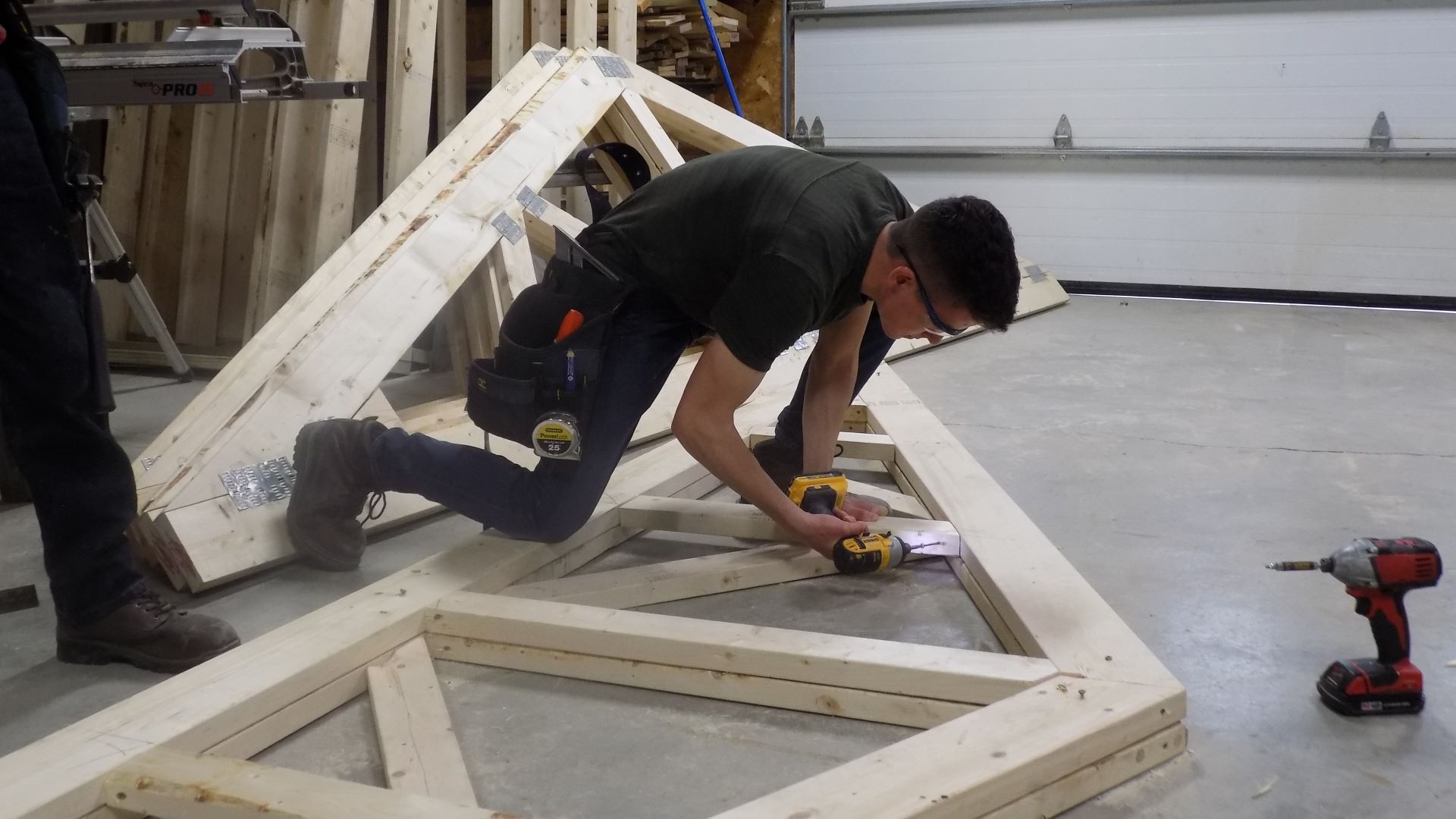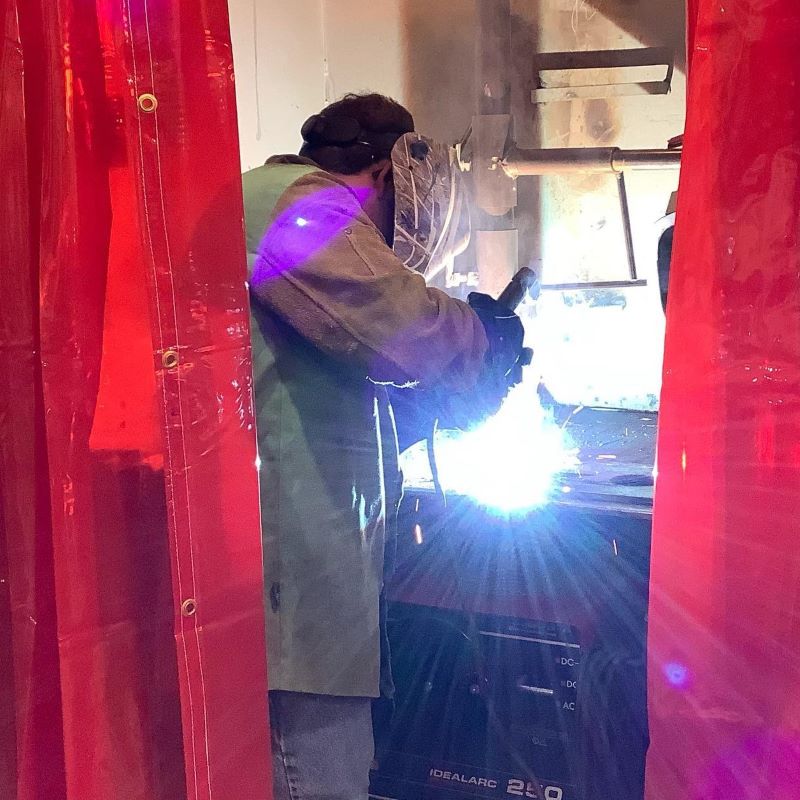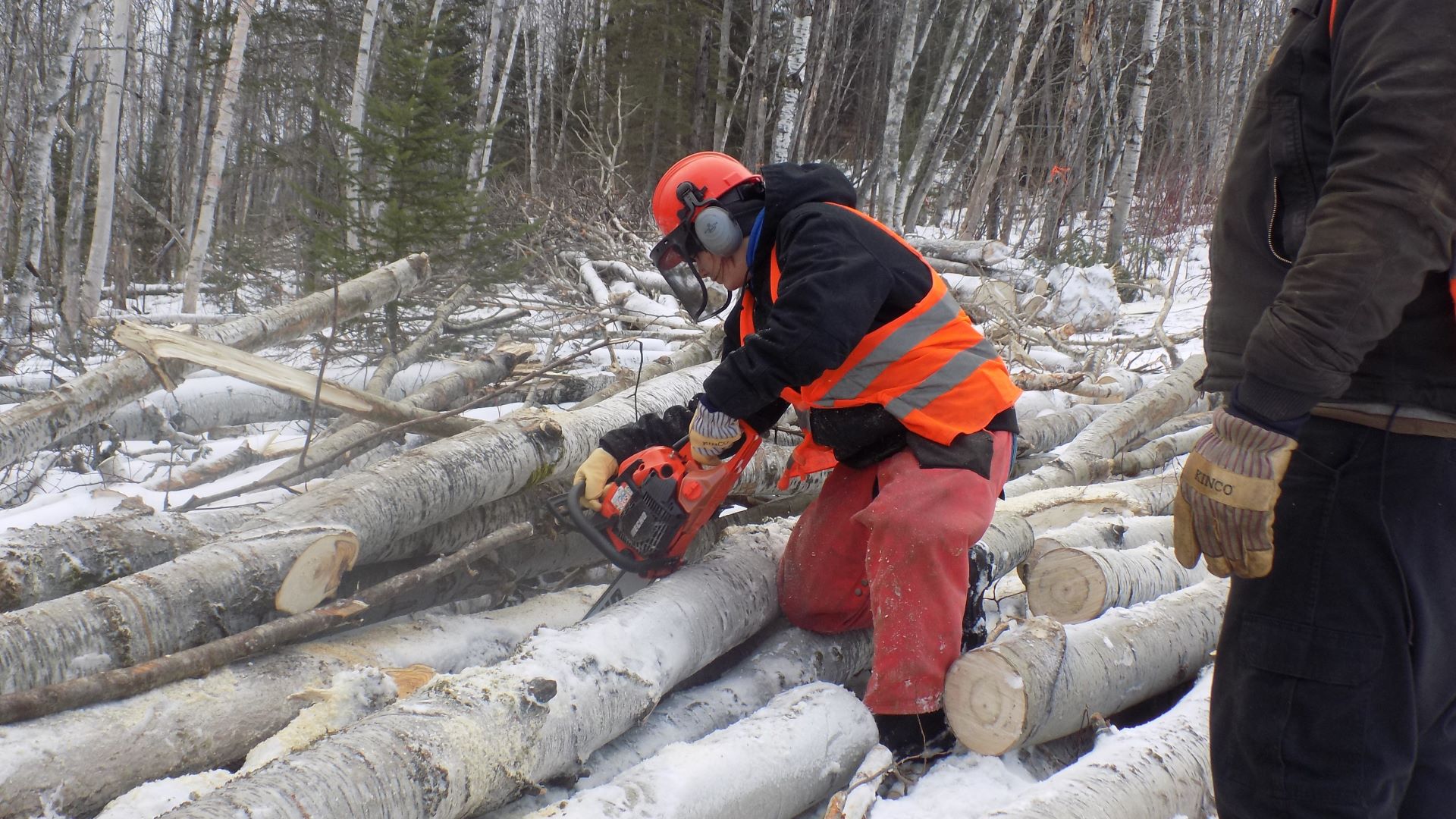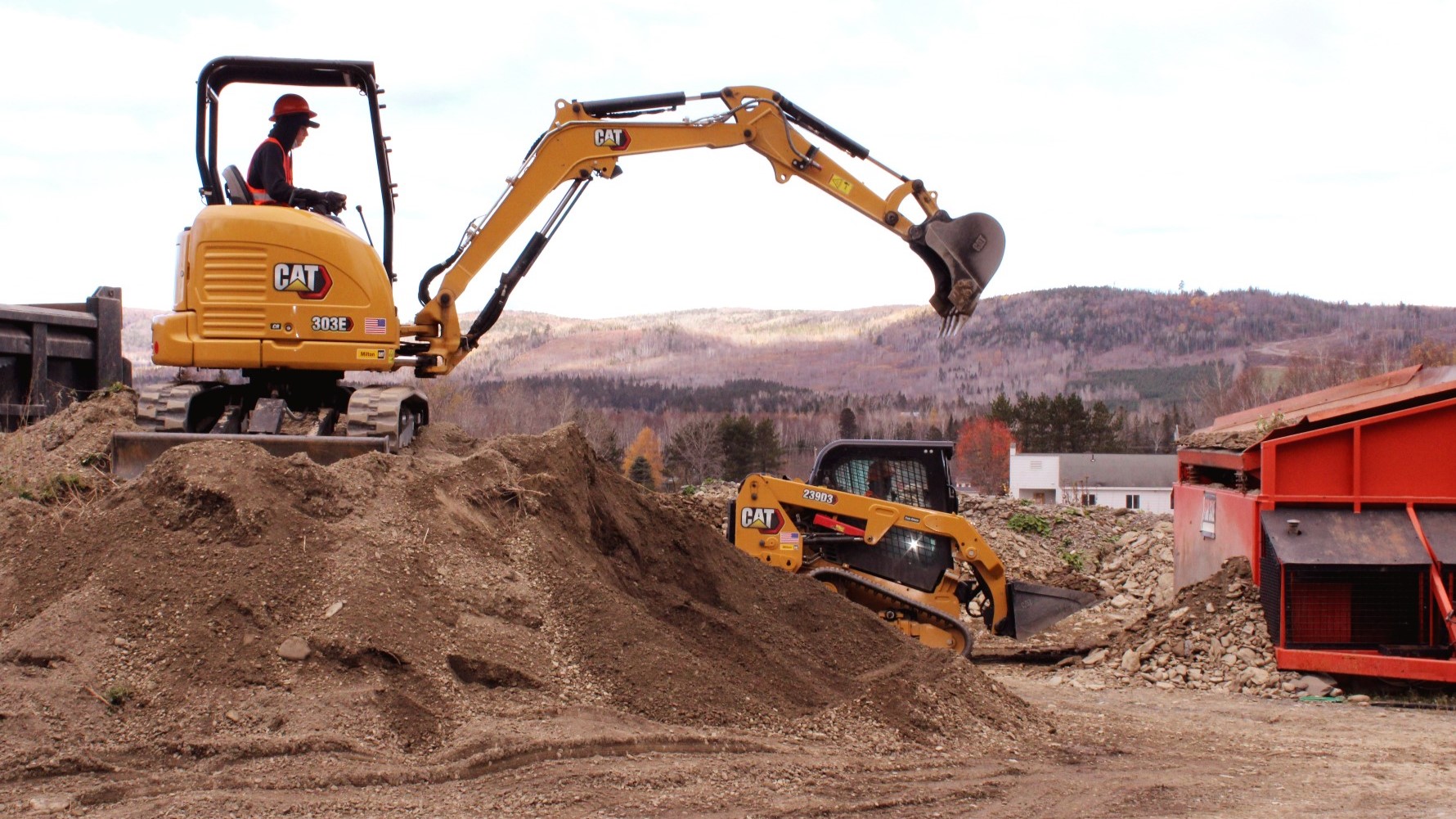Ralph Conroy receives more than a half-dozen calls a month from Presque Isle-area business owners, telling him about job openings for his students to fill. The businesses have an urgent need for reliable, skilled workers, and want to hire students at Presque Isle Tech Center, where Conroy is the director.
His colleagues throughout Maine’s 27 career and technical centers have the same experience, Conroy said. Like the nation, the state is struggling with a shortage of skilled workers that is exacerbated by the current working population slowly aging out of fields such as plumbing, welding and electrical work.
Businesses around the state are increasingly looking to career and technical schools as a potential solution.
Over the past five years, enrollment in Maine’s career and technical schools has steadily increased, according to the Maine Department of Education, leading to new course offerings. Still, technical center directors worry about staffing and space capacity.
Career and technical programs allow students — typically high schoolers — to spend part of their school time learning hands-on skills in numerous areas, ranging from biomedical sciences to culinary arts and farm mechanics, to electric vehicle technology.
Students can apply those skills directly to enter the job market after graduation, pursue hands-on education through the community college system, or use credits toward a four-year degree.
Enrollment in career and technical schools passed 10,000 statewide for the first time, according to the Department of Education.
“Kids are looking for relevance in their education. I think they’re questioning more, especially post-COVID, ‘Why am I taking these classes? Is what I’m learning apply to where I’m headed in life?’ “ Conroy said.
“They’re choosing things they’re interested in, that have relevance. And (career and technical education) fits that very well.”
What programs are popular varies widely from center to center. Typically students respond to polls about programs they may be interested in, which informs CTE centers on what courses they can add, two center directors said.
In St. John Valley, the welding and advanced technologies programs are full. For Presque Isle, it’s the farm mechanics program, at capacity with 24 students attending hands-on classes in two shifts of 12 each.
In the Ellsworth area, the health occupations program, and automotive technology and diesel technology programs are at capacity, according to Bill Tracy, the Hancock County Technical Center director. And in Brunswick, the culinary arts, metal fabrication and building trades programs are full and have waitlists for the next school year.

The enrollment rise in these programs is unequivocally positive, and critical to Maine’s economy, according to technical center directors from different parts of the state, and a longtime advocate and former Hancock County lawmaker, Brian Langley.
Although enrollment rises aren’t consistent across programs, most technical centers report increased interest from students, and all four technical center directors that The Maine Monitor spoke with are adding programs in the upcoming school year, responding to student demand.
The programs vary widely, from cybersecurity and smart car technology, to welding, electric and plumbing.
At the same time, the stigma historically associated with students choosing technical programs or trade schools over four-year college is diminishing, although not entirely, according to Langley. Both these factors have contributed to students having increased interest in developing skills in the trades.
“We don’t have enough people working in the trades and in the technical areas, and so consequently, demand for people has gone up, and wages in those areas have gone up so that now those are very lucrative careers for people,” Langley said.
“People are looking at the return on investment of post-secondary (education) and maybe making different choices.”
Push to expand programs hindered by staffing, space constraints
Gov. Janet Mills’ administration has supported CTE programs, sending millions to schools around the state in recent years. Last year she said four Maine schools will receive $15 million in grant funding through the Maine Jobs & Recovery plan for adding programs and building facilities.
The state has increased funding for CTEs by more than $10 million over the past four years, including $1.6 million to assist in the increased costs of supplies, $100,000 to expand CTE early childhood education programs and $500,000 to expand middle school CTE programs, according to a department spokesperson.
Despite this push, space and staffing constraints continue to hold back centers statewide.
At Hancock County Technical Center, with approximately 250 students, several programs have waiting lists because the aging building does not have enough room to accommodate every student interested in certain programs, said Tracy, the director.

The building the technical center is housed in was built in 1965, and Tracy has applied to the state multiple times in the past seven years for a new building to be approved. Meanwhile, almost half the students that applied to a popular program, automotive technology, have to be rejected because of space constraints, he said.
Tracy had to rely on community partnerships to start offering a firefighter program next year, to meet student demand while addressing the lack of space in his building. The center’s welding program is also offsite, at Bucksport High, which allows more students to participate.
Another major issue all four tech center directors said they face is staffing. School staffing shortages have been rampant across the country for years, and hiring CTE instructors is no exception, they said.
The instructors career and technical centers hire often come from industry and may take pay cuts to teach. They also have to take seven college-level courses as part of the certification process, which can take years, and balance that as they teach.
The DOE does not collect staffing data from CTE centers, so there is no statewide estimate of staffing shortages.
“So you take an instructor who has potentially made quite a bit more, who decides to come here, who then has all these hoops to jump through for certification,” Tracy said.
“That’s hard to hire when we’re stuck in a situation like that.”
A rejected proposal for a dedicated CTE high school
To meet the growing demand for CTE, administrators at the Region 10 Technical High School in Brunswick proposed a high school serving about 300 full-time students and 100 part-time students in a building that would integrate career and technical programs with the typical elements of traditional high schools, such as core instruction in English and math, extracurriculars, special education and sports.
The proposal for the first-of-its-kind $60 million high school was supported by a study conducted by Hart Consulting in 2023.
The study listed the challenges of part-time CTE instruction — including juggling students’ schedules, relying on school districts to determine what credits students could get for CTE, and the capacity challenges that accompanied growing interest in hands-on education.
The proposal for a newly constructed high school at Brunswick Landing was rejected last December by a task force made up of state legislators, CTE directors and representatives from industries.
Task force members who rejected the plans were concerned in part that enrollment at other technical centers in the area would suffer, and said the focus should be on better funding existing centers rather than building a new one.

But Superintendent Shawn Chabot of Region 10 Technical High School said he still believes in the need for Region 10 to pursue a full-time CTE high school, and plans to find other avenues, including legislative support, to push for it.
Meanwhile the school has about 300 part-time students from three surrounding districts, and is expected to go up to almost 350 in the upcoming school year due to the addition of new programs.
“When you can integrate math, science and social studies, English Language Arts into the field that a student is going to study, like a hard trade or other trades or careers, there’s relevance in that,” Chabot said.
“And that they don’t often ask the question, ‘Why am I learning this? I’m never going to use this.’ “
The proposed school would not take away enrollment from other centers, but would allow more students to participate in CTE and remove some capacity constraints around the Brunswick area are facing, Chabot said.
Opportunities differ
CTE is funded by a combination of state and federal funding, and the programs a school is able to offer depend in part on the level of enrollment, which has frustrated directors of smaller schools.
According to the Maine Department of Education’s standards for subsidizing CTE, a program needs to have at least an average of 12 students over a three-year enrollment period to get paid for a full-time instructor.
Kevin Lavoie, director of the St. John Valley Technology Center, Maine’s northernmost CTE school, has petitioned the Maine Educational Policy Foundation to help introduce legislation to change the enrollment threshold for funding to eight students for small CTE centers.
Lavoie’s center, which has about 107 high schoolers (in addition to 65 middle schoolers, as part of a pilot program) draws about a fourth of the total population of its four sending schools, which is a larger percentage compared to most CTE centers, Lavoie said.
While his center has seen some of the same increases in enrollment that others have across the state, and a couple of the 11 programs — such as welding and advanced technologies — are at capacity, there are many that are not. If programs don’t have enough students, they risk losing funding from the state for instructors.
Meanwhile, he’s adding three programs next year based on student demands, while still dealing with challenges of space and staffing, like all others across the state.
“Why should I not be providing for my students the same opportunities that Hancock County does, or Portland, and have a variety of programming, just because they have all these enrollment numbers?”







